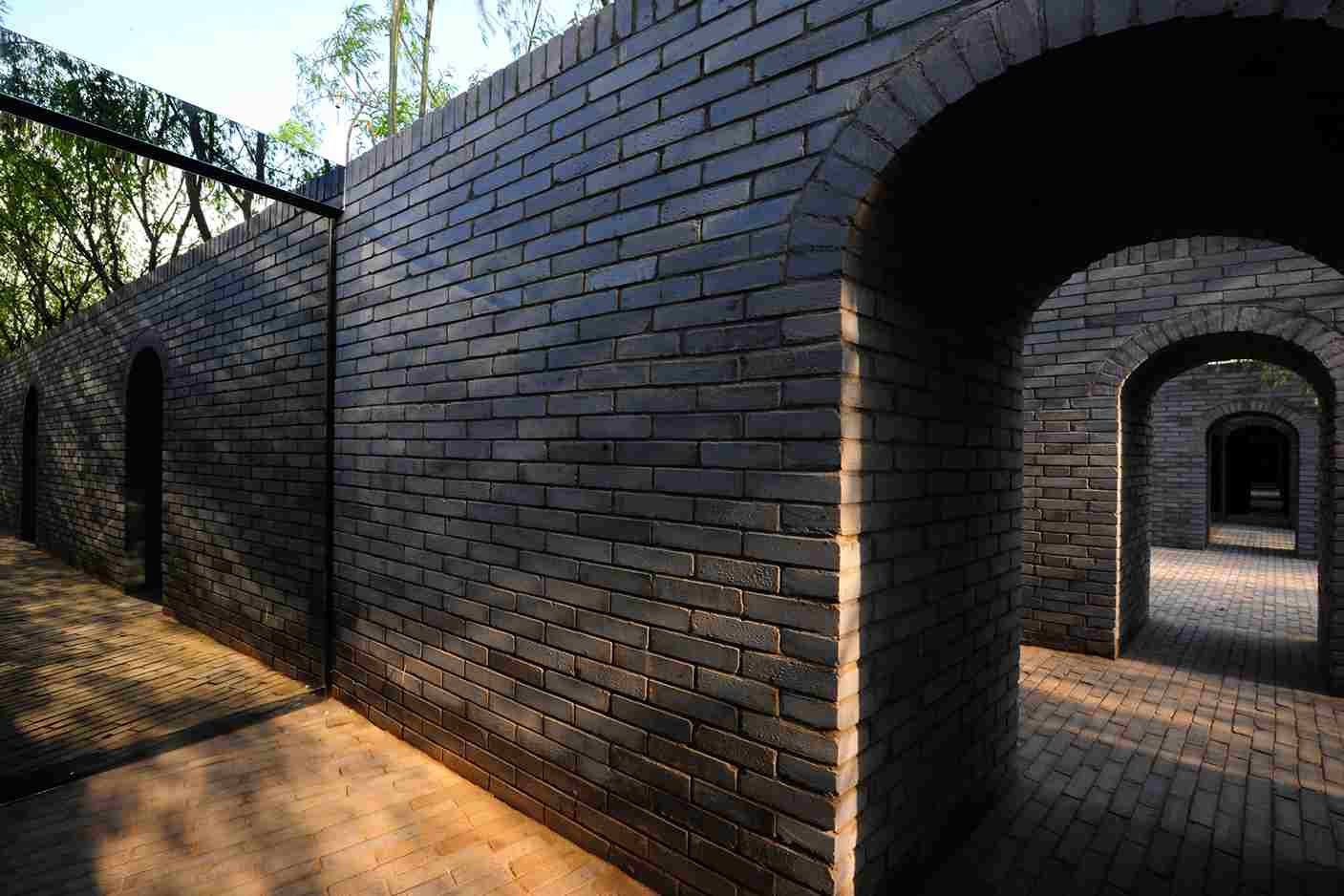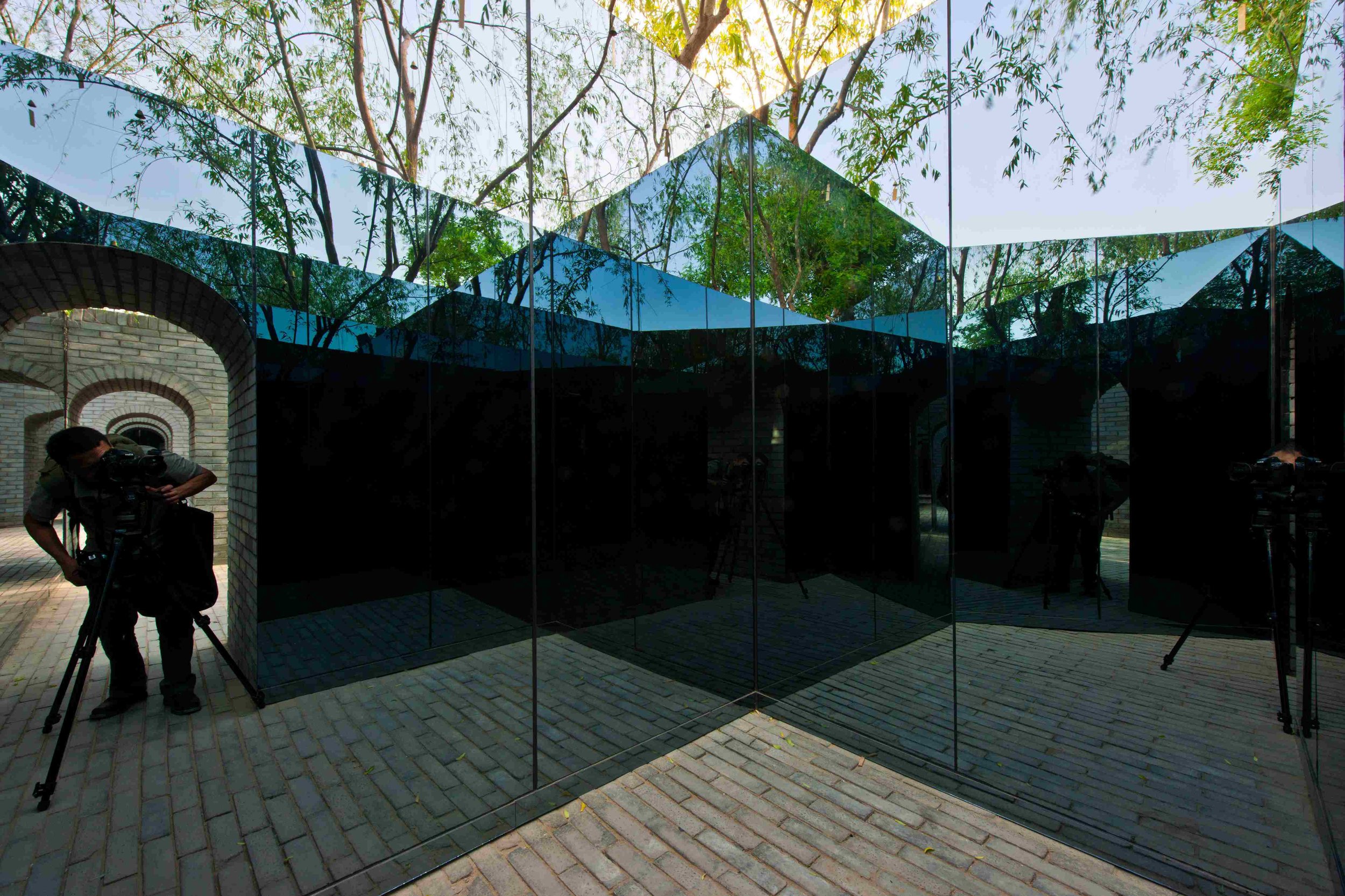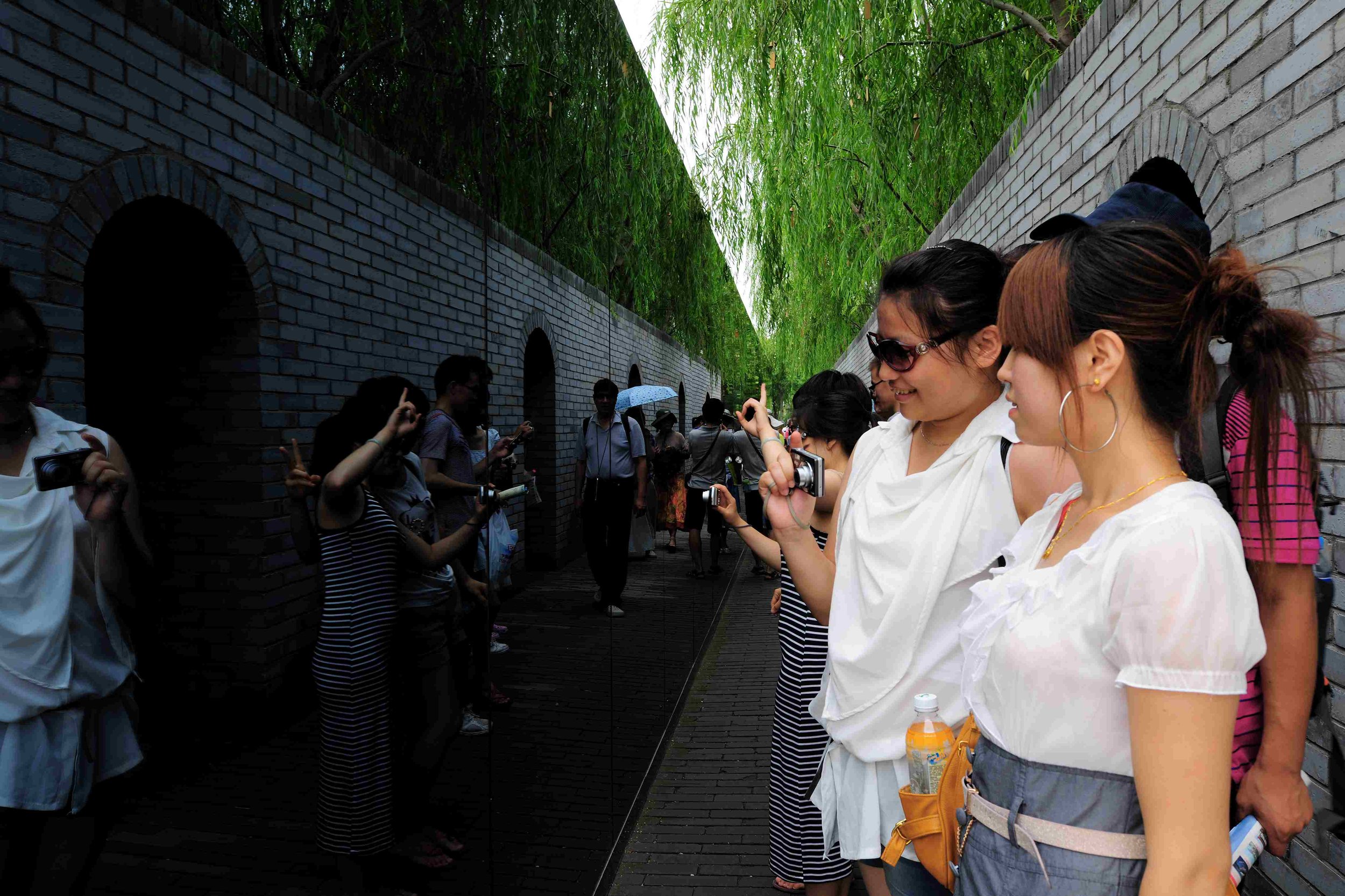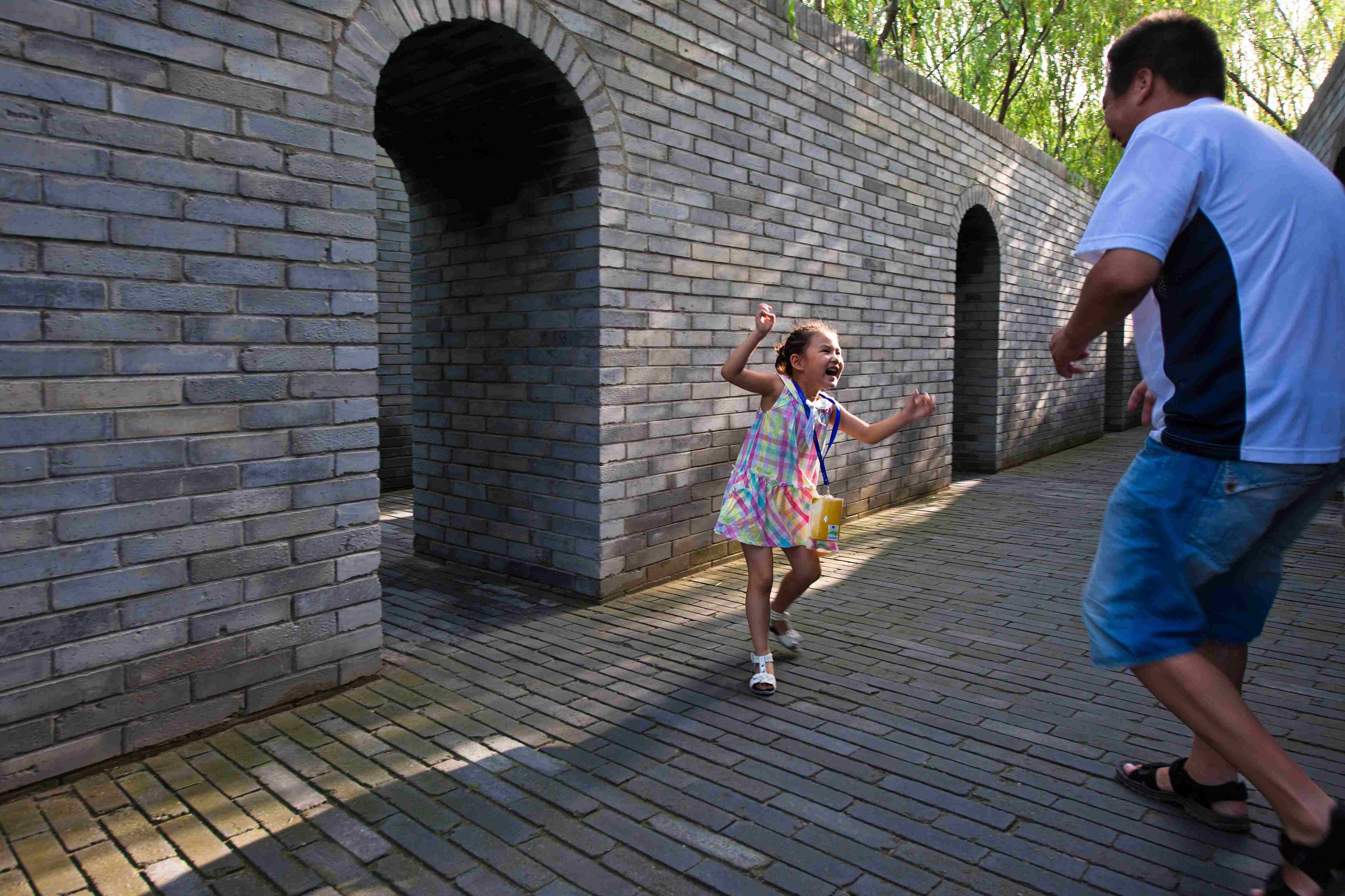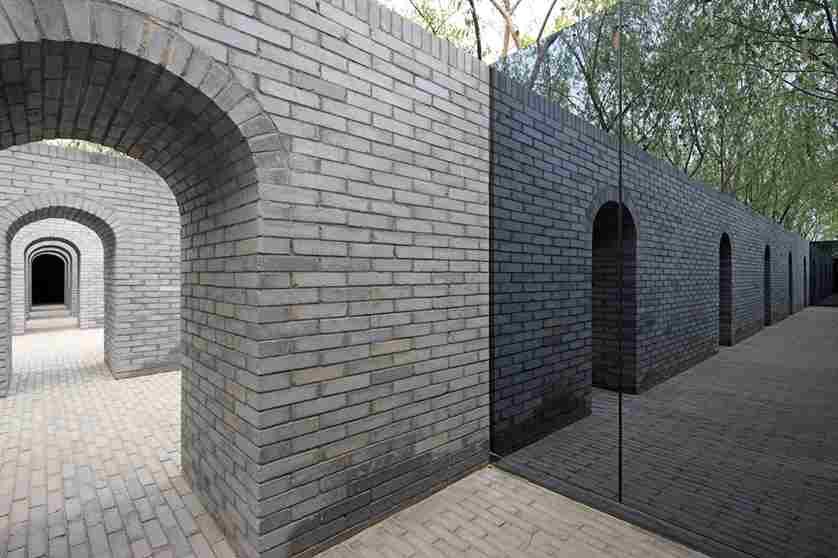City and Nature Master Garden
Location Xi’an, China | Client Xi’an International Horticultural Exposition Organizing Committee | Size 900 square meters | Status Completed 2011 | Tags Culture and Art
Martha Schwartz Partners was one of nine international landscape design firms to be invited to design a small garden installation on the theme of “the harmonious co-existence of nature and the city” at the 2011 International Horticulture Exhibition in Xi’an, China. The owner’s brief specified that the designer should consider the limitations of local building materials and methods, and that the garden should be accessible to a Chinese point of view.
The theme of this garden installation is “City and Nature” and is composed of four elements: traditional grey brick walls and paving, Weeping Willows, one-way mirrors, and bronze bells. The aesthetic direction was derived partly from vernacular Chinese architecture and its close relationship to nature.
Grey brick has long been the principle construction material for vernacular architecture. It has been the main construction material for centuries, together with wood. Such walls are the most popular element to create space and protect privacy in cities, and are frequently used in palaces to express power. For many people living in courtyard houses for generations, these walls provide the separation line of the inside and outside world, city and country. Such walls have been listed as among many foreigners’ strongest impressions of China.
The Weeping Willow has a special place in Chinese poems, history, stories, calligraphy, and painting. Weeping Willows have been intensively used to express longing, for friends or home, and feelings of nostalgia. They are often used as a symbol for feminine beauty, for its soft, subtle, lissom and graceful figure. During the Sui and Tang dynasties, the custom developed of breaking off a wicker of willow and give it to the departing friends or relatives in hope that they would make a longer stay, because the two words “willow” and “stay” are homophones in Chinese. By giving a wicker to friends or relatives, they also meant to wish that their cherished friends or relatives would have a new life wherever they went, just as a wicker continues to come up wherever it is transplanted.
The combination of living willows and solid grey walls is an expression of the harmonious co-existence of nature and city.
The “city” is entirely walled by simple, 3 meter high brick walls that seem to have no entrance. One enters the “city” through two ends of an open hallway created by a blank but totally mirrored wall facing a façade of 5 archways. These archways penetrate 1.5 meter thick walls with Weeping Willows on top and connect to a series of courtyards. They are overarched with Weeping Willow branches which are hung with over 1000 small tuned bronze bell wind chimes. The sonic pitch of the bells is aligned with the width of the courtyards below. The number of possible archways to move through increases as one begins to walk through the space, creating a situation where people must begin to choose where to go and what route to try – an endless choice of routes through the maze. At the same time, no one quite knows where they are going and what to expect. It creates an experience of fun, discovery and perhaps some anxiety.
At each end of the transverse courtyards are mirrored walls which create an illusion of infinite space. As one penetrates the last of these courtyards, one enters a dark, enclosed exit corridor and is confronted with a wall of one-way mirrors facing a mirrored garden room with a grid of willow trees that seems to go on forever. One abruptly transitions from endless city to endless nature.
Exiting via dark covered corridors, one discovers that many of the mirrors they had encountered on the way through the transverse courtyards are actually one-way mirrors, through which they can observe others from the hidden dark corridor. This effect comes at a surprise to the visitors who were not aware until now that they can be watched from behind the mirrors. People can vicariously and secretively watch newcomers in the maze while hidden in the hidden dark corridor.
The garden is a minimalist work of contemporary land art that speaks to the antiquity and timelessness of China, the flexibility and durability of its culture and people. It is Ying and Yang, light and heavy, masculine and feminine. It is rich by its own simplicity. Everybody can sense it in their own way.

